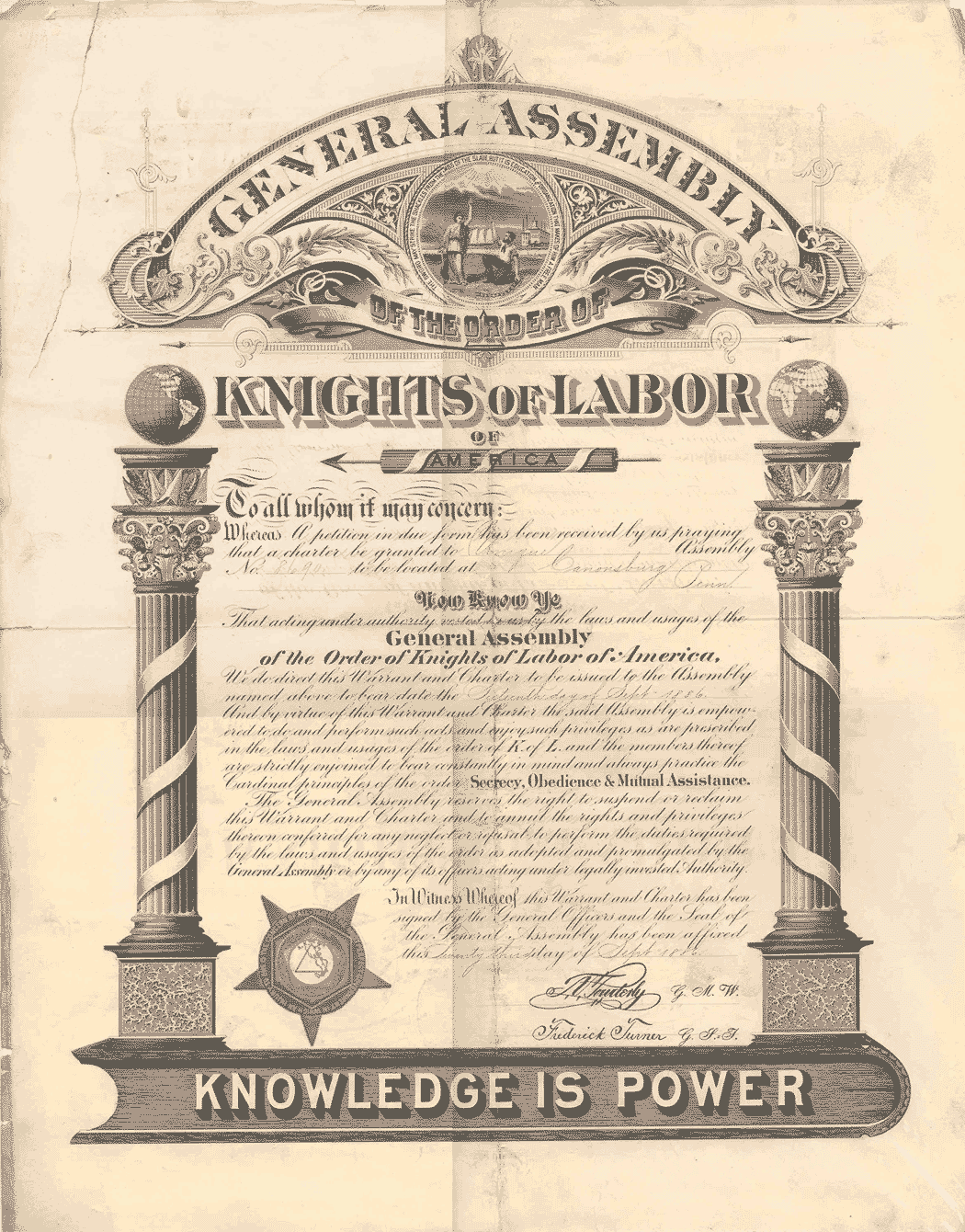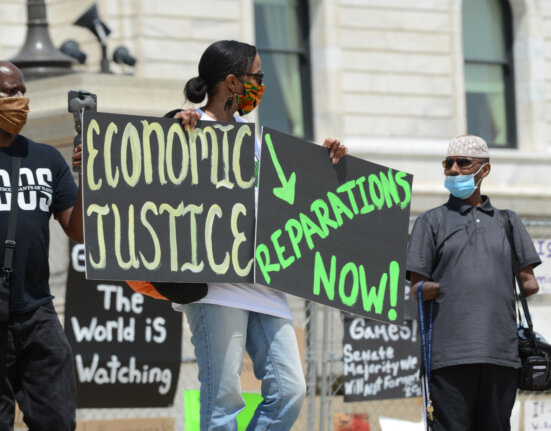2019 marks the 150th anniversary of the Knights of Labor, the most important labor movement of the Gilded Age. It is worth thinking anew about that organization and not just because of that anniversary. We are now deep in the second Gilded Age and if we look back to that earlier age of plutocrats, it becomes clear that we are repeating more than a label. There are similarities in the challenges that workers faced in the 1870s and 1880s and also, curiously, in some of the strategies that workers in that distant age tested. With that in mind, the Mapping American Social Movements Project is proud to introduce “Knights of Labor History and Geography 1869-1899” an online set of maps and visualizations that vividly display the remarkable growth and geography of the Knights of Labor.
The maps are a revelation. It is one thing to know that Knights membership approached the one million mark in 1886-87 and another to see the distribution of Knights Local Assemblies in more than 5,600 cities and towns, and to be able to see year by year where new LAs were formed and how long they lasted. Other maps show the 182 Local Assemblies that were led by Black workers and the 246 established by women workers while also identifying each Assembly according to whether it was “Mixed” or associated with a particular craft or industry. This is a resource that will be useful in history classes while also helping scholars see the Knights in new ways.
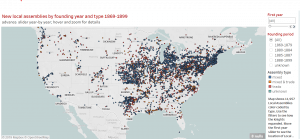
Jonathan Garlock developed the data more than forty years ago, combing issues of the Journal of United Labor, the Knights official periodical, as well as Proceedings of the General Assembly of the Knights of Labor. On computer punch cards he assembled the Knights of Labor Data Bank with information on nearly 12,000 Local Assemblies and used it in his dissertation “Structural Analysis of the Knights of Labor” (PhD, University of Rochester, 1974). He then published the data in tabular form in the Guide to the Local Assemblies of the Knights of Labor (Greenwood Press, 1982). This year, in honor of the anniversary, Jonathan agreed to bring his Data Bank to life once again with the Mapping American Social Movements Project, a University of Washington-based consortium of visualizations about dozens of social movements that have influenced American life and politics since the late 19th century.
The Knights data and maps are newly relevant because we are in a moment of history when American capitalism is repeating some of the dynamics of the first Gilded Age, matching the soaring economic inequality and redistribution of legal/political power of that era when the Supreme Court, Senate, and Executive branch gutted civil rights laws and granted corporations unchecked authority to control workers and governments. The Knights of Labor emerged in that context and became influential in the 1880s by organizing in new ways with new messages and strategies.
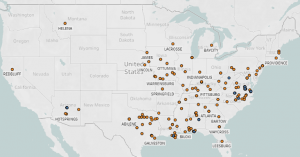
Some of what the Knights did seems relevant today. Steven Parfitt, author of Knights Across the Atlantic: The Knights of Labor in Britain and Ireland (2016), wrote recently about “Why the Knights of Labor Still Matter,” praising the Knights for “their enthusiasm for ending wage slavery and building the co-operative commonwealth, creating labour and popular alternatives to the established parties, promoting the struggles of black and women workers, and joining with workers from other countries and not merely keeping them out.” There are also interesting similarities in the way that worker movements then and now experimented with organizational forms and political action. As the federal government, especially the Supreme Court, built up corporate supremacy in the 1880s, the Knights turned to local and state activism creating both unions and cooperatives and engaging in new forms of politics, launching labor parties and winning legislation in some states and cities to regulate corporations and establish labor rights.[i] So too in recent years, blue states have become zones for increased political activism with workers movements using local politics to shore up rights that had once been anchored in union power and now degraded federal laws. Whether the current strategies will prove any more effective in the long term than the Knights’ efforts in the 1880s remains to be seen, but the echo is intriguing.
Geography
The interactive maps now featured on the Mapping American Social Movements Project allow us to see this history in new ways. The geographic scope is itself stunning and the year-by-year tools help us better appreciate the rhythms of growth and decline. The Noble Order of the Knights of Labor expanded quietly in its first decade and mostly in anthracite coal mining districts of Pennsylvania where its initial commitment to secrecy helped local units survive the Great Depression of the 1870s and the fierce repression of the Molly Maguires. With the election of Terence V. Powderly as Grand Master Workman in 1879, the Knights began its remarkable period of growth. Dropping the secrecy rituals, the organization also shortened its name, responding to Irish Catholics (including Powderly) who objected to the “Noble and Holy Order” prefix. Membership surged from the start of the decade and then exploded in 1885 and 1886 as the Knights took the lead in the 8-hour-day movement and gained credit for winning strikes. By 1886, the Knights counted close to six thousand active Local Assemblies. Assemblies had been formed in every state in the US, in nearly every Canadian province, and in Britain, Ireland, Belgium, New Zealand, and Australia.
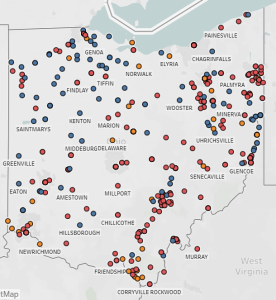
In the United States, assemblies were organized in communities of every type, from mining camps and country crossroads to rural county seats; from small industrial towns to cities and metropolitan centers. Of the three and a half thousand places in America with populations over 1,000 in the decade 1880-1890, half had at least one Local Assembly of the Knights of Labor sometime between 1869 and 1896. Of the more than four hundred places in America with populations over 8,000, all but a dozen had Knights LAs. Many communities had several LAs, while major cities had more than one hundred. The scope and density can be seen in Map 3 and the other state-by-state maps available on the project site.
Assemblies themselves varied considerably in size — from those with barely the ten members requisite to obtain a charter to those with more than a thousand members. Membership in the Order was not only extensive but extraordinarily diverse. Occupationally, recruitment was into either trade or mixed assemblies: over a thousand distinct trades eventually formed locals, while the mixed assembly, including members of more than a single trade, achieved wide success both in isolated rural communities and in urban centers. Just as LAs might be occupationally exclusive or mixed, so numerous LAs were formed entirely of black or women workers, or workers of distinct ethnic origins, while in many assemblies membership cut across racial, gender, and ethnic lines.
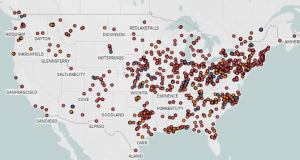
The next decade was difficult but the maps tell a story different than the standard one that has the Knights declining rapidly in the aftermath of the ill-conceived railroad strike in 1886 and in the face of competition from the newly launched American Federation of Labor. Membership declines were indeed significant, especially in the cities where defections to the AFL craft unions took a heavy toll, but the organization was at the same time still growing. From 1888-1896 the Knights added more than 2,000 new Local Assemblies, as shown in Map 4. Competition between the two labor federations favored the AFL, whose model of craft exclusivity and closed-shop bargaining helped it survive the depression of 1893. The economy recovered in 1896, but not the Knights of Labor. By the turn of the century the Knights of Labor was fading fast, to be later succeeded by the Industrial Workers of the World.
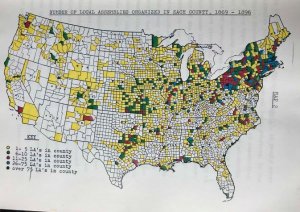
Mapping Then and Now
It is instructive to think about how the tools of historians have changed since the 1970s when this project was begun. It was heralded at the time as a pioneering example of “quantitative history.” whereas this version is labeled “digital history.” There was nothing digital about the original work. Research involved reading print or microfilm sources one item at a time, taking notes, consolidating and cross-checking information, then key punching computer cards, one card for each local assembly. Hundreds of hours were spent with atlases, finding locations and identifying the associated counties. The population of each location was coded from census data for 1880 and 1890. A mainframe computer did the work of producing counts of various kinds and tables that became part of Garlock’s dissertation. The charts had to be drawn by hand. The dissertation also featured twenty-four colored maps, one of which appears below. The xerographic technology used to produce color copies was cutting edge in 1974. Living in Rochester, home to the Xerox corporation, Garlock had access to color copy technology before it was commercially available.
Mapping technologies have improved dramatically since the early 1970s. Too bad we cannot say the same about the labor movement and workers’ rights.
[i] See Leon Fink, Workingman’s Democracy: The Knights of Labor and American Politics (University of Illinois Press, 1983); Robert E. Weir, Beyond Labor’s Veil: The Culture of the Knights of Labor (Pennsylvania State University Press, 1996).


